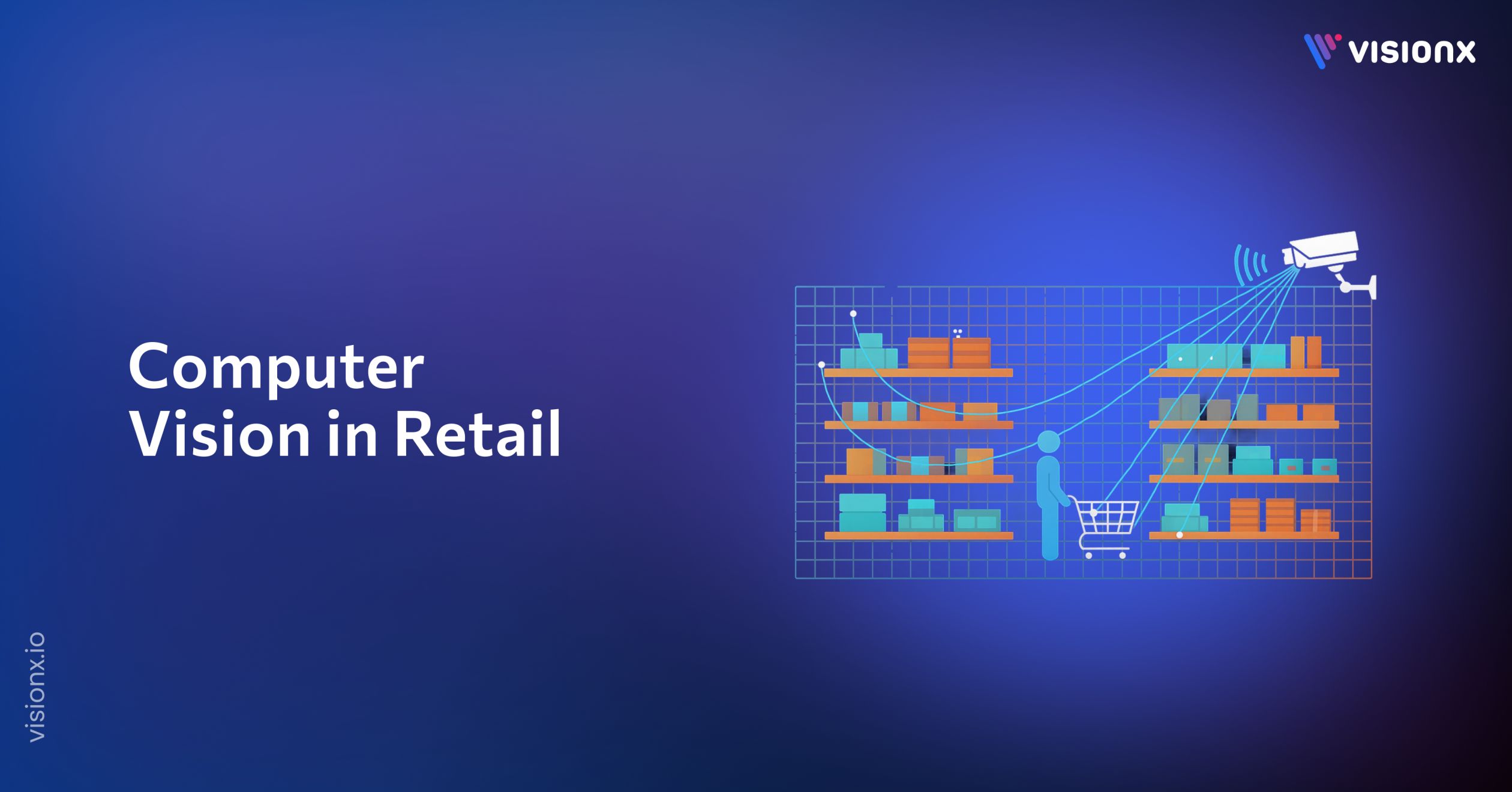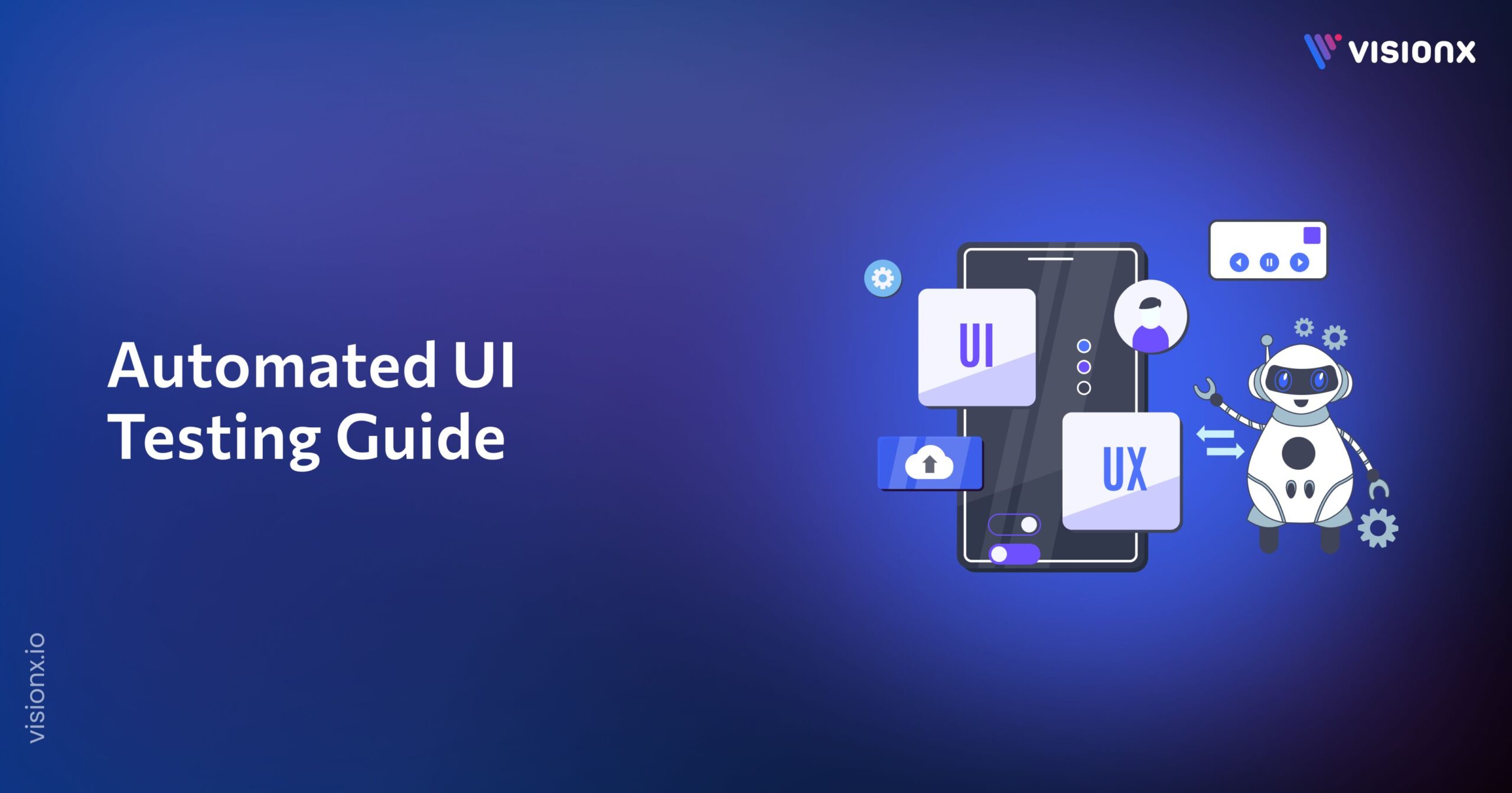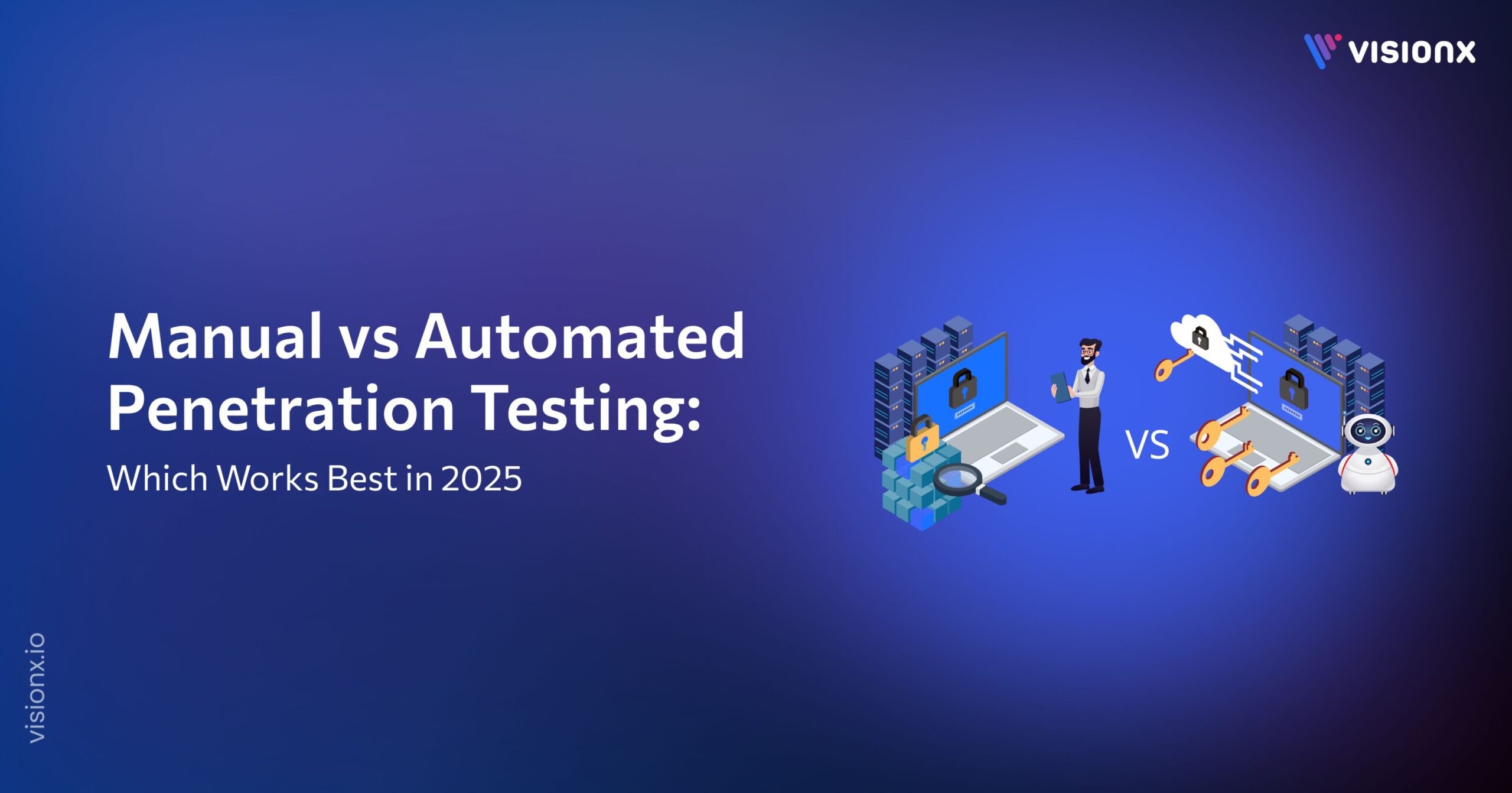Think about the last time you struggled to find a product or stood in a slow checkout line. Well, computer vision in retail is designed to notice these issues and make your shopping experience smoother. It gives retail stores the ability to notice the small details that we usually miss.
For example, Deloitte projects that the retail industry will continue to expand at a CAGR of 1.5 to 3.5%, which makes efficiency technologies like computer vision even more critical for sustaining growth. This same computer vision technology not only supports growth at the industry level but also works on the ground, as it can detect when a popular product is out of stock by 3 PM or when a display causes a traffic jam.
These are the practical applications of computer vision that fix small issues that have a big impact on your day. When those problems get solved, your experience becomes simpler. You find what you need, the lines move faster, and you leave the store more satisfied.
By the end of this blog, you will have a clear picture of how this technology is quietly changing everyday retail operations.
What Is Computer Vision in Retail?
Computer vision in retail is the use of artificial intelligence and machine learning tools and technologies that enable computers to interpret and analyze visual data obtained from cameras, sensors, and images inside stores.
It allows retail stores to automatically monitor shelves, track customer behavior, manage inventory levels, and prevent losses by “seeing” and understanding what happens in real-time. AI-powered models examine visual content to detect anomalies, behaviors, or patterns so that they can produce actionable insights.
In a brick and mortar retail setting, this means technology can:
- Track shelf inventory management and detect when items go out of stock.
- Identify misplaced products or planogram compliance issues.
- Monitor customer flow to reduce checkout lines and prevent crowding.
- Enhance loss prevention by spotting suspicious behavior.
Computer vision for retail helps retailers reduce inefficiencies, improve customer satisfaction, and support data-driven decision-making through computer vision retail analytics.
According to McKinsey, computer vision is the second most widely adopted AI solution across industries, showing how quickly businesses are embracing it to drive efficiency and customer satisfaction.
How Can It Benefit Retail?
Computer vision for retail solves problems that are hard to see with the human eye. For instance, a manager might know a store is busy. But computer vision technology can show the exact spot where people get stuck. An employee might notice a shelf is empty. But the system can predict when it will become empty and alert staff beforehand.
This leads to two major outcomes.
First, stores operate more efficiently. They reduce theft, manage stock better, and use staff where they are most needed. With computer vision retail analytics, these insights turn into real cost savings.
Second, the customer experience improves. Shoppers face shorter lines, find products in stock, and navigate a less crowded store. This naturally builds loyalty and improves overall customer satisfaction.
According to research, the global retail computer vision platform market size is expected to reach nearly USD 23.56 billion by 2033, reflecting the growing adoption of AI-driven retail solutions.
Top 10 Applications of Computer Vision in Retail
Computer vision in retail is evident in ways that make shopping easier and streamline retail operations. These ten computer vision applications in retail show how stores are actively using it to solve everyday problems.
1. Smart Checkout and Cashier less Stores
This system aims to remove the worst part of shopping, that is, the checkout line. The computer vision cameras are used to track products, not people. When you pick an item from the shelf, it goes into your digital basket. A computer vision system knows what you keep and what you return. Your account settles the bill as you leave the store.
A well-known example is Amazon GO computer vision, where shoppers simply walk in, grab what they need, and walk out. The charges appear on their card automatically within minutes.
Many computer vision retail companies now provide systems that work with a store’s existing layout. They install cameras that manage the checkout process automatically. It makes the physical act of buying things much less work.
2. Shelf Monitoring and Inventory Management
When customers encounter empty shelves, their dissatisfaction produces more harm to the store than just losing potential sales. The customers start to lose their trust. Computer vision in retail stops this problem through its unending shelf monitoring activities.
The cameras track inventory levels during the entire day, which enables them to detect when a popular product runs out of stock. The system generates a silent notification that store staff members receive to replenish stock before customers enter the store again.
Staff members can skip aisle inspections for stock and focus on providing service to customers, as this system provides automated inventory management. Walmart, along with other major retailers, employs this method to keep its store shelves completely stocked. The result shows a basic yet strong outcome. Customers find products easily, which leads to higher sales for the business.
3. Customer Behavior and Foot Traffic Analysis
Retailers have always been curious about what customers are doing once they cross the threshold of their store, and now computer vision in retail provides those insights. By watching how people naturally move through the retail space, store managers will know where they stop to examine, how long they look at a display, and which pathways they avoid.
The system can use image recognition for retail to report that a narrow, cramped aisle is annoying, or a product that should be displayed well is being hidden in the corner of the store.
Having this information, managers will be able to make changes that are feasible. They may relocate high-volume merchandise to more accessible locations or expand a troublesome aisle. These minor modifications to the store would translate to an easier-to-navigate experience for customers.
4. Personalized Marketing and Product Recommendations
Retail stores can identify repeat customers, which allows them to know the shopping habits and preferences of individual customers over time.
An example of this is a system that will be aware when you frequently purchase gluten-free items or constantly pause to browse new coffee brands. Using image recognition for retail, the store is then able to provide useful and personalized recommendations based on this knowledge. As you browse the aisles, a computer screen may show you a coupon for a gluten-free snack you frequently purchase, or the app in the store may notify you that your favorite coffee is on sale this week.
This method is more of a personalized service than random advertising, as the offers are determined by your real actions. This allows you to get value from the promotional ads you see, and also the store gets to know you better as a loyal customer.
5. Loss Prevention and Security
Internal theft and shoplifting dramatically eat into the profits of a store, creating a dilemma that impacts the business and its clients. To eliminate this problem, computer vision in retail offers a continuous and vigilant layer of security.
The system will observe the whole sales floor to detect those who were previously caught stealing and observe suspicious activities such as a person hiding merchandise or a cashier who keeps visiting the scanner.
Once it notices a possible danger, the system automatically alerts security personnel in real-time so that they can take prompt action in a very non-obtrusive manner before the matter gets out of hand. This proactive method of computer vision inventory management usually prevents theft prior to its occurrence, resulting in a direct loss reduction of inventory and safeguarding the store’s income.
To learn more about this technology in action, see our blog on AI in security and surveillance.
6. Price Tag and Label Recognition
A false price label is one of the most frustrating aspects of a customer, and it may cause an unpleasant quarrel at the checkout. Computer vision in retail can be used to avoid such cases through continuously scanning the shelves to track all labels. The system automatically verifies that all products are at the price stated on the list, as well as searching for missing or damaged tags that may mislead the shoppers.
Once it detects an error, it sends an urgent notification to the staff, including the location of the error, so an employee can fix the issue in time before more customers are exposed to it. This solution saves time and frustration for everyone. By using computer vision technology, the store tracks label accuracy, while image recognition for retail helps identify errors.
7. Virtual Try-On and Smart Mirrors
Trying on clothes can be a pain, but computer vision applications in retail are transforming the process both in fitting rooms and online. This technology is used in virtual try-on solutions and smart mirrors to allow you to see how various clothing items or makeup appear on you without the physical inconvenience involved.
An example of this is a smart mirror in a store, which can identify the pieces you are carrying and then recommend matching items or alternate sizes, on the spot.
The same principle applies to online shopping, where Augmented Reality (AR) applications use your camera to display images of a pair of glasses or a hat on your face at home. These tools will assist you in making more confident purchasing decisions about the fit and style. This results in reduced returns to the store and a more fulfilling, efficient experience for you.
8. Automated Checkout Basket Recognition
Computer vision for retail can make the process much faster, even in those stores that retain their traditional brick-and-mortar retail counters. This computer vision technology works by targeting the conveyor belt on which you place items. A camera sweeps across and recognizes every piece of merchandise as you unload your basket. It is able to detect objects at any angle, and it does not need a visible barcode to operate.
The computer vision system will then create a list of your items in several seconds. Though a cashier is around to help, the system removes the time-consuming process of scanning one product at a time. This will reduce your time at the teller by half, and the checkout line will also move at a faster pace for everyone who follows you.
9. Supply Chain and Logistics Optimization
Computer vision work starts way before a product goes to the store shelf and is a key factor in warehouses and distribution centers. In this case, cameras attached to machines, such as forklifts, are able to monitor inventory in pallets at all times, follow the movement of goods, and detect those that are damaged even before they are shipped. This continuous monitoring establishes a more dependable and efficient merchandise movement that enables a store manager to be aware of the actual position and condition of a shipment.
A key application of computer vision in retail is in inventory management, as the system can forecast when stock is going out of stock, and it can also be used to automatically place orders to avoid a shortage, improving overall supply chain forecasting and ensuring products are on the shelf when customers need them.
10. Store Cleaning and Maintenance Automation
Computer vision for retail industry enables a store to carry on cleaning and other maintenance works at the desired level, which is the basic element of good customer experience. It does so by real-time monitoring of the store conditions. The system employs image recognition in retail to detect spills in aisles, identify waste bins that have been filled beyond capacity, and monitor freezer doors that are not working.
When it detects a problem like this, it automatically sends a very accurate alert to the maintenance staff, which enables them to respond swiftly before the matter gets out of hand.
The cleanup crew could clean the spill so that it doesn’t pose a danger, and the technicians will fix the malfunction in the freezer to prevent the products inside from spoiling. With image recognition for retail, customers enjoy a safe, pleasant shopping environment while stores reduce losses, improve efficiency, and build trust.
Benefits of Applying Computer Vision in Retail
When retail stores use computer vision, the benefits become clear very quickly. This technology provides a more accurate view of what actually happens inside a store, which eventually leads to better decisions.
Lower Operational Costs
Computer vision in retail automates many manual tasks. It counts inventory, monitors shelves, and watches for loss. This means stores can use their staff for more important work. It also reduces financial losses from theft or human error.
Improved Customer Satisfaction
The computer vision technology fixes common customer complaints. It makes sure products are in stock and easy to find. It allows checkout lines to move faster and helps keep the store clean and safe. When retail stores solve these small problems, the shopping trip feels much easier.
Better Decision Making
Stores get real data about what happens on the sales floor. They see how customers move and what they look at. This removes the uncertainty from decisions about store layout, product placement, and staffing levels. Managers can act on facts, not just instincts.
Increased Sales
Customers will purchase more when they can find their necessities and have a good experience. A well-stocked store and good sales promotions are the most obvious ways to achieve more transactions. The store is increasing its sales, and the customer receives what they wanted.
Future of Computer Vision in Retail
Here are the key developments that will shape how stores use computer Vision in retail in the coming years.
A. Deeper Technology Integration
Computer vision will be combined with other systems, such as Augmented Reality and the Internet of Things. Your phone might use AR to show product information when you point it at a shelf. Smart shelves with IoT sensors will talk to the vision system for perfect inventory accuracy. Generative AI could use the visual data to design store layouts that maximize both sales and comfort.
B. From Personalization to Prediction
Stores will move beyond simple recommendations. The system will learn your patterns so well that it might remind you to restock items you usually buy. It could prepare your order for pickup before you even finish shopping. This shifts the experience from reactive to predictive service.
C. Mainstream Autonomous Operations
The concept of cashier less stores will expand to larger formats. Larger grocery stores and general retailers will adopt fully automated checkout. The technology will also handle complex tasks like managing fresh produce sections and preventing spoilage.
How VisionX Can Help Retailers Use Computer Vision
VisionX provides tailored computer vision development services that turn store camera feeds into actionable business intelligence. We build custom AI solutions that address specific retail challenges, from inventory management to customer experience.
Our core capabilities include:
- Customizable solutions tailored to your specific operational challenges
- Seamless integration with your existing cameras and retail systems
- Actionable business intelligence that drives real-world outcomes
We help you move from raw video data to clear business decisions. The result is measurable improvements in efficiency, customer satisfaction, and profitability. VisionX makes advanced computer vision accessible and practical for retailers of any size.
Tell us about your store, and we can help you build a system that works.
FAQs
How is computer vision used in retail?
Computer vision in retail analyzes visual data from cameras and sensors to monitor inventory, track customer behavior, prevent theft, and optimize store operations. It helps retailers make data-driven decisions in real time.
How is computer vision helpful in retail and inventory management?
Computer vision enables automated monitoring of stock levels, predicts when products will run out, and can even trigger automatic reordering. This ensures shelves remain stocked, reduces losses, and improves supply chain efficiency.
How does computer vision improve customer experiences?
By tracking store traffic, identifying congestion points, and monitoring product availability, computer vision helps reduce wait times, ensures items are in stock, and creates a smoother, more satisfying shopping experience.
Is computer vision a dead field?
Not at all. Computer vision continues to evolve rapidly, driven by AI and machine learning innovations, and it is increasingly applied across retail, security, manufacturing, healthcare, and many other industries.


